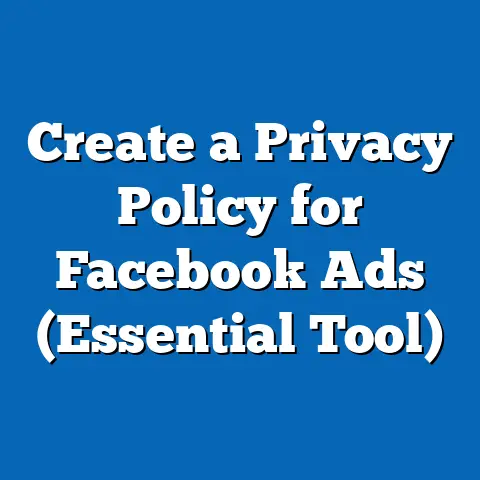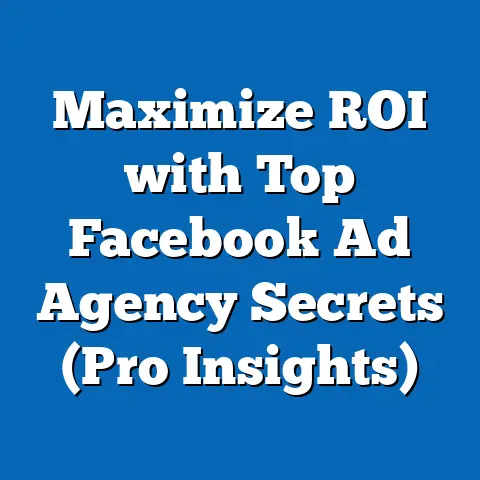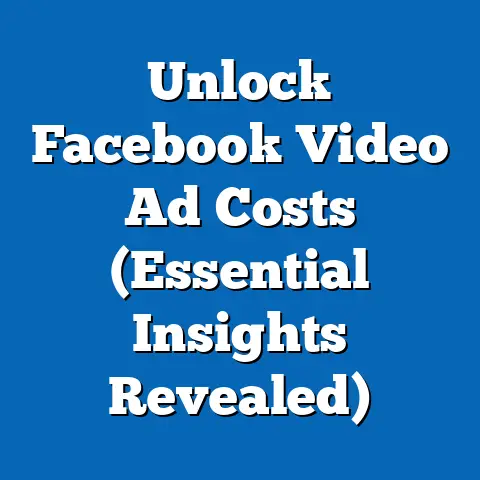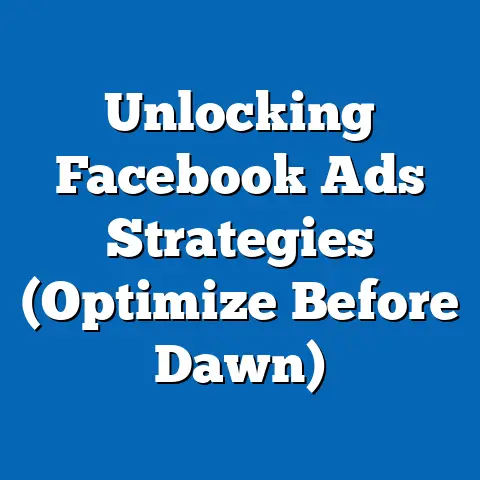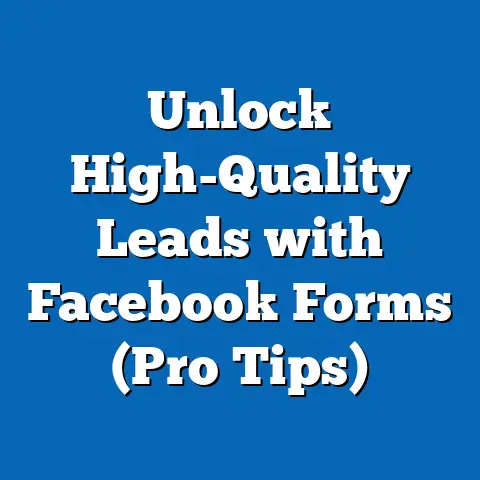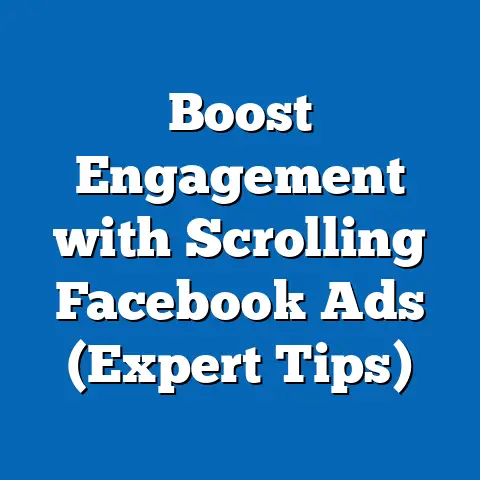Create Compelling Facebook Ads That Convert (Expert Strategy)
In today’s fast-paced world, where health and wellness are paramount, reaching the right audience with the right message is crucial. And where better to connect with a vast and diverse audience than on Facebook? Think about it: we’re constantly bombarded with information, but what truly sticks with us? It’s the message that resonates, the ad that understands our needs and offers a solution. That’s where the power of compelling Facebook ads comes in, especially when it comes to health-related products and services.
The digital landscape has transformed the health sector, particularly after the pandemic. People are actively seeking information, solutions, and products online to enhance their well-being. This shift has made Facebook advertising an indispensable tool for health-related businesses to connect with potential customers. However, simply running ads isn’t enough; you need to create compelling campaigns that not only capture attention but also drive meaningful conversions.
I remember working with a small fitness studio struggling to attract new clients. They were running Facebook ads, but their results were lackluster. After diving deep into their target audience, refining their messaging, and optimizing their visuals, we saw a dramatic increase in sign-ups and engagement. This experience solidified my belief in the power of strategic Facebook advertising.
This article is your ultimate guide to crafting Facebook ads that not only grab attention but also convert viewers into loyal customers. I’ll equip you with expert strategies, actionable tips, and real-world examples to create campaigns that resonate with your target audience, promote better health choices, and ultimately, drive maximum impact. Let’s dive in!
Section 1: The Psychology Behind Compelling Ads
To truly connect with your audience on Facebook, you need to understand the psychology that drives their decisions. It’s not just about showcasing your product or service; it’s about tapping into their emotions and needs. This is where understanding consumer psychology becomes crucial.
Understanding Consumer Psychology
Consumer psychology explores how people think, feel, reason, and select between different alternatives. In the context of Facebook advertising, it helps us understand what motivates people to click on an ad, visit a website, or make a purchase.
Key principles of consumer psychology to consider include:
- Cognitive biases: These are mental shortcuts that can influence decision-making. For example, the “availability heuristic” suggests that people overestimate the importance of information that is readily available to them.
- Emotional triggers: These are stimuli that evoke strong emotions, such as fear, joy, or trust.
- Social proof: This is the tendency to look to others for cues on how to behave.
- Scarcity: This is the perception that something is in limited supply, which can increase its perceived value.
Leveraging Emotional Triggers in Health-Related Ads
Emotional triggers are powerful tools in advertising, especially in the health sector. By tapping into emotions like fear, joy, and trust, you can create ads that resonate deeply with your audience.
- Fear: This can be used to highlight the consequences of neglecting health, such as the risk of developing chronic diseases. For example, an ad for a health insurance plan might emphasize the financial burden of unexpected medical expenses.
- Joy: This can be used to showcase the positive outcomes of adopting a healthy lifestyle, such as increased energy levels, improved mood, and enhanced self-esteem. For example, an ad for a fitness program might feature images of people enjoying exercise and feeling confident.
- Trust: This is essential for building credibility and reassuring potential customers. You can build trust by highlighting credentials, testimonials, and scientific evidence. For example, an ad for a dietary supplement might feature endorsements from doctors or nutritionists.
Example:
I once worked on a campaign for a local chiropractic clinic. Initially, their ads focused solely on the services they offered. However, after analyzing their target audience, we realized that many people were driven by the fear of chronic pain and limited mobility. We revamped their ads to highlight the long-term benefits of chiropractic care, emphasizing how it could help people maintain an active and pain-free lifestyle. The results were remarkable, with a significant increase in appointment bookings.
Successful Health Campaigns and Psychological Principles
Several successful health campaigns have effectively utilized psychological principles. Here are a few examples:
- Truth Campaign: This anti-smoking campaign used humor and social proof to challenge the tobacco industry and encourage young people to quit smoking.
- Dove’s Real Beauty Campaign: This campaign challenged traditional beauty standards and promoted body positivity, resonating with women of all ages.
- NHS Organ Donor Campaign: This campaign used emotional storytelling to raise awareness about organ donation and encourage people to register as donors.
Key Takeaway: Understanding consumer psychology and leveraging emotional triggers can significantly enhance the effectiveness of your Facebook ads. By tapping into the emotions and needs of your target audience, you can create ads that resonate deeply and drive meaningful conversions.
Next Steps:
- Research the psychological principles that are most relevant to your target audience and the health products or services you are promoting.
- Brainstorm ways to incorporate emotional triggers into your ad copy and visuals.
- Analyze successful health campaigns to identify the psychological principles they utilized effectively.
Section 2: Understanding Your Audience
Before you even think about crafting your ad copy or selecting your visuals, you need to have a deep understanding of your target audience. Who are they? What are their needs, desires, and pain points? What motivates them to seek out health solutions?
Identifying and Understanding Your Target Audience
Identifying your target audience involves defining the specific group of people who are most likely to be interested in your health products or services. This includes factors such as:
- Demographics: Age, gender, location, education level, income.
- Interests: Hobbies, activities, topics they are passionate about.
- Behaviors: Online habits, purchase history, engagement with health-related content.
- Pain Points: What challenges are they facing related to their health and wellness?
Tools and Techniques for Audience Research on Facebook
Facebook offers several tools and techniques for audience research:
- Facebook Audience Insights: This tool provides detailed information about the demographics, interests, and behaviors of people on Facebook.
- Facebook Pixel: This tool tracks website visitors and their actions, allowing you to create custom audiences based on their behavior.
- Facebook Analytics: This tool provides insights into the performance of your Facebook page and ads, helping you understand what resonates with your audience.
- Surveys and Polls: Directly asking your audience about their needs and preferences can provide invaluable insights.
My Experience:
I remember working with a client who offered online yoga classes. Initially, they were targeting a broad audience of “yoga enthusiasts.” However, after using Facebook Audience Insights, we discovered that their ideal customer was a woman between the ages of 35 and 55, interested in stress relief and mindfulness. By narrowing their targeting and tailoring their messaging to this specific audience, we saw a significant increase in class sign-ups.
Creating Detailed Customer Personas
A customer persona is a semi-fictional representation of your ideal customer, based on research and data about your existing and potential customers. Creating detailed customer personas can help you understand their needs, desires, and pain points, allowing you to craft more relevant and persuasive ads.
Example Customer Persona:
- Name: Sarah
- Age: 42
- Occupation: Marketing Manager
- Location: Suburban area
- Income: $80,000 per year
- Goals: To reduce stress, improve her physical fitness, and maintain a healthy weight.
- Challenges: She has a busy work schedule, struggles to find time for exercise, and often feels overwhelmed.
- Interests: Yoga, meditation, healthy eating, self-care.
- Values: Health, family, balance.
By understanding Sarah’s goals, challenges, interests, and values, you can create ads that speak directly to her needs and desires. For example, you might create an ad that highlights the convenience of online yoga classes for busy professionals or emphasizes the stress-relieving benefits of meditation.
Key Takeaway: Understanding your audience is the foundation of successful Facebook advertising. By conducting thorough audience research and creating detailed customer personas, you can craft ads that resonate with your target audience and drive meaningful conversions.
Next Steps:
- Use Facebook Audience Insights to research the demographics, interests, and behaviors of your target audience.
- Install the Facebook Pixel on your website to track website visitors and their actions.
- Create detailed customer personas that reflect the needs and desires of your ideal customers.
Section 3: Crafting the Perfect Message
Once you understand your audience, the next step is to craft a compelling message that resonates with them. This involves creating ad copy that is clear, persuasive, and relevant to their needs and desires.
Key Components of Effective Ad Copy
Effective ad copy typically consists of three key components:
- Headline: This is the first thing people will see, so it needs to grab their attention and entice them to learn more.
- Body Text: This provides more information about your product or service and its benefits.
- Call to Action (CTA): This tells people what you want them to do next, such as “Learn More,” “Sign Up,” or “Shop Now.”
Tips for Communicating Health Benefits Clearly and Persuasively
When communicating health benefits, it’s important to be clear, concise, and persuasive. Here are a few tips:
- Focus on the benefits, not just the features: Explain how your product or service will improve their health and well-being.
- Use clear and simple language: Avoid jargon or technical terms that your audience may not understand.
- Highlight the unique value proposition: What makes your product or service different from the competition?
- Use testimonials and social proof: Show how your product or service has helped others achieve their health goals.
- Create a sense of urgency: Encourage people to take action now by offering a limited-time discount or bonus.
Examples of Strong Ad Copy
Here are a few examples of strong ad copy that resonates with health-conscious consumers:
- Headline: “Reduce Stress and Improve Your Health with Online Yoga Classes”
- Body Text: “Our convenient online yoga classes are designed to help you reduce stress, improve your flexibility, and boost your overall well-being. Sign up today and start feeling better!”
- CTA: “Sign Up Now”
- Headline: “Boost Your Immune System with Our Natural Vitamin C Supplement”
- Body Text: “Our vitamin C supplement is made with all-natural ingredients and is designed to help you boost your immune system and protect yourself from illness. Order now and get 20% off!”
- CTA: “Shop Now”
- Headline: “Achieve Your Weight Loss Goals with Our Personalized Nutrition Coaching”
- Body Text: “Our certified nutrition coaches will work with you to create a personalized plan that helps you achieve your weight loss goals. Get started today and transform your health!”
- CTA: “Learn More”
- Body Text: “Our convenient online yoga classes are designed to help you reduce stress, improve your flexibility, and boost your overall well-being. Sign up today and start feeling better!”
- CTA: “Sign Up Now”
- Body Text: “Our vitamin C supplement is made with all-natural ingredients and is designed to help you boost your immune system and protect yourself from illness. Order now and get 20% off!”
- CTA: “Shop Now”
- Body Text: “Our certified nutrition coaches will work with you to create a personalized plan that helps you achieve your weight loss goals. Get started today and transform your health!”
- CTA: “Learn More”
My Insight:
I’ve found that using the “problem-agitation-solution” (PAS) formula can be incredibly effective for crafting ad copy. Start by identifying the problem your target audience is facing, then agitate the problem by highlighting the negative consequences, and finally, present your product or service as the solution.
Key Takeaway: Crafting the perfect message is essential for capturing the attention of your target audience and driving conversions. By focusing on the benefits, using clear language, and creating a sense of urgency, you can create ad copy that resonates with health-conscious consumers.
Next Steps:
- Brainstorm headlines, body text, and CTAs that are relevant to your target audience and the health products or services you are promoting.
- Use the “problem-agitation-solution” (PAS) formula to craft compelling ad copy.
- Test different versions of your ad copy to see what resonates best with your audience.
Section 4: Visual Elements That Capture Attention
In the visually driven world of Facebook, your ad’s visual elements are just as important as your ad copy. A captivating image or video can stop users in their tracks and entice them to learn more about your offering.
The Role of Imagery and Video in Facebook Ads
Imagery and video play a crucial role in Facebook ads. They are the first thing people see, and they can make or break your ad’s success.
- Images: High-quality images can capture attention, evoke emotions, and communicate your message quickly and effectively.
- Videos: Videos can tell a story, demonstrate your product or service, and engage your audience on a deeper level.
Choosing Images That Align with the Health Message
When choosing images for your health-related ads, it’s important to select images that:
- Are high-quality and visually appealing: Avoid blurry or pixelated images.
- Are relevant to your message: Choose images that align with the health benefits you are promoting.
- Evoke the right emotions: Select images that evoke positive emotions, such as joy, hope, and trust.
- Are diverse and inclusive: Represent people of different ages, genders, ethnicities, and body types.
Example:
If you’re promoting a fitness program, you might choose images of people enjoying exercise, feeling confident, and achieving their fitness goals. Avoid images that are overly sexualized or promote unrealistic body standards.
Best Practices for Video Ads
Video ads can be incredibly effective, but it’s important to follow best practices to maximize their impact.
- Keep it short and sweet: Aim for videos that are 15-30 seconds long.
- Grab attention in the first few seconds: Use a captivating visual or hook to grab attention immediately.
- Tell a story: Use storytelling to engage your audience and connect with them on an emotional level.
- Showcase your product or service: Demonstrate how your product or service works and its benefits.
- Include a clear call to action: Tell people what you want them to do next.
- Use captions: Many people watch videos with the sound off, so it’s important to include captions.
My Recommendation:
I’ve found that user-generated content (UGC) can be incredibly effective for video ads. UGC is content created by your customers, such as testimonials, reviews, or videos of them using your product or service. This type of content is often more authentic and trustworthy than traditional advertising.
Key Takeaway: Visual elements are crucial for capturing the attention of your target audience and driving conversions. By choosing high-quality images and creating engaging video ads, you can significantly enhance the effectiveness of your Facebook ads.
Next Steps:
- Select high-quality images that are relevant to your message and evoke the right emotions.
- Create engaging video ads that tell a story, showcase your product or service, and include a clear call to action.
- Consider using user-generated content (UGC) in your video ads.
Section 5: Leveraging Facebook’s Ad Targeting Options
Facebook’s ad targeting options are incredibly powerful, allowing you to reach specific demographics, interests, and behaviors. By leveraging these tools effectively, you can ensure that your ads are seen by the people who are most likely to be interested in your health products or services.
Deep Dive into Facebook’s Ad Targeting Features
Facebook offers a wide range of ad targeting features, including:
- Demographic Targeting: Target people based on their age, gender, location, education level, income, and other demographic factors.
- Interest Targeting: Target people based on their interests, hobbies, and activities.
- Behavior Targeting: Target people based on their online habits, purchase history, and engagement with health-related content.
- Custom Audiences: Create custom audiences based on your existing customer data, such as email lists or website visitors.
- Lookalike Audiences: Create lookalike audiences based on your custom audiences, targeting people who are similar to your existing customers.
Reaching Health-Focused Demographics
To reach health-focused demographics, you can use a combination of targeting options. For example, you might target:
- Demographics: People between the ages of 35 and 55 who are interested in health and wellness.
- Interests: People who are interested in yoga, meditation, healthy eating, or fitness.
- Behaviors: People who have purchased health-related products online or visited health-related websites.
- Custom Audiences: People who have signed up for your email list or visited your website.
- Lookalike Audiences: People who are similar to your existing customers.
Case Studies of Successful Facebook Targeting
Several brands have successfully utilized Facebook targeting to enhance their ad performance. Here are a few examples:
- Weight Watchers: This weight loss company uses Facebook targeting to reach people who are interested in weight loss, healthy eating, and fitness.
- Headspace: This meditation app uses Facebook targeting to reach people who are interested in stress relief, mindfulness, and meditation.
- Nike: This athletic apparel company uses Facebook targeting to reach people who are interested in sports, fitness, and running.
My Tip:
Don’t be afraid to experiment with different targeting options to see what works best for your business. Start with broad targeting and then narrow your focus as you gather data and learn more about your audience.
Key Takeaway: Leveraging Facebook’s ad targeting options is essential for reaching the right audience and maximizing your ad performance. By using a combination of demographic, interest, behavior, custom, and lookalike audiences, you can ensure that your ads are seen by the people who are most likely to be interested in your health products or services.
Next Steps:
- Explore Facebook’s ad targeting options and identify the ones that are most relevant to your target audience.
- Create custom audiences based on your existing customer data.
- Create lookalike audiences based on your custom audiences.
- Experiment with different targeting options to see what works best for your business.
Section 6: Testing, Analyzing, and Optimizing Ads
Creating compelling Facebook ads is not a one-time effort; it’s an ongoing process of testing, analyzing, and optimizing. By continuously monitoring your ad performance and making adjustments as needed, you can ensure that your ads are always performing at their best.
The Significance of A/B Testing
A/B testing, also known as split testing, involves creating two or more versions of an ad and testing them against each other to see which one performs better. This allows you to identify the most effective ad copy, visuals, and targeting options.
Example:
You might A/B test two different headlines to see which one generates more clicks. Or, you might A/B test two different images to see which one captures more attention.
Key Performance Indicators (KPIs) Relevant to the Health Niche
When measuring the success of your Facebook ads in the health niche, it’s important to focus on key performance indicators (KPIs) that are relevant to your business goals. These might include:
- Click-Through Rate (CTR): This measures the percentage of people who click on your ad after seeing it.
- Conversion Rate: This measures the percentage of people who take a desired action, such as signing up for a newsletter or making a purchase, after clicking on your ad.
- Cost Per Acquisition (CPA): This measures the cost of acquiring a new customer through your Facebook ads.
- Return on Ad Spend (ROAS): This measures the revenue generated for every dollar spent on Facebook ads.
- Engagement Rate: This measures the level of engagement with your ad, such as likes, comments, and shares.
Analyzing Ad Performance Data and Making Informed Adjustments
To analyze ad performance data, you can use Facebook Ads Manager, which provides detailed insights into the performance of your ads.
- Monitor your KPIs: Track your KPIs over time to identify trends and areas for improvement.
- Identify underperforming ads: Pause or edit ads that are not performing well.
- Analyze your targeting options: See which targeting options are generating the best results.
- Test different ad copy and visuals: Experiment with different ad copy and visuals to see what resonates best with your audience.
- Adjust your budget: Allocate more budget to your best-performing ads.
My Strategy:
I always start with a clear hypothesis before running an A/B test. For example, “I believe that using an image of a doctor in our ad will increase trust and improve the click-through rate.” This helps me stay focused and ensures that I’m testing something meaningful.
Key Takeaway: Testing, analyzing, and optimizing your Facebook ads is an ongoing process. By continuously monitoring your ad performance and making adjustments as needed, you can ensure that your ads are always performing at their best.
Next Steps:
- Implement A/B testing to identify the most effective ad copy, visuals, and targeting options.
- Monitor your KPIs to track your ad performance over time.
- Analyze your ad performance data and make informed adjustments to improve your results.
Section 7: Staying Compliant with Facebook’s Advertising Policies
Navigating Facebook’s advertising policies is crucial, especially in the health sector, where regulations are stringent. Non-compliance can lead to ad disapprovals, account restrictions, or even permanent bans.
Understanding and Adhering to Facebook’s Advertising Policies
Facebook has strict advertising policies that prohibit ads that are misleading, deceptive, or harmful. In the health sector, this includes ads that:
- Make unsubstantiated health claims: You must have scientific evidence to support any health claims you make.
- Promote harmful products or services: You cannot promote products or services that are known to be harmful, such as tobacco or illegal drugs.
- Target vulnerable populations: You cannot target ads to children or people with certain medical conditions.
- Use scare tactics or fear-mongering: You cannot use fear tactics or fear-mongering to promote your products or services.
Common Pitfalls to Avoid
Here are some common pitfalls to avoid when creating health-related ads:
- Making exaggerated claims: Avoid making claims that are too good to be true.
- Using before-and-after photos that are misleading: Ensure that your before-and-after photos are accurate and representative of typical results.
- Promoting products or services that are not FDA-approved: Ensure that your products or services are FDA-approved, if required.
- Using language that is discriminatory or offensive: Avoid using language that is discriminatory or offensive towards any group of people.
Navigating Policy Restrictions Effectively
To navigate policy restrictions effectively, it’s important to:
- Read and understand Facebook’s advertising policies: Familiarize yourself with the specific policies that apply to your industry.
- Be transparent and honest in your ads: Avoid making misleading or deceptive claims.
- Provide scientific evidence to support your claims: Cite reputable sources to back up your health claims.
- Monitor your ads for compliance: Regularly review your ads to ensure that they are compliant with Facebook’s advertising policies.
- Appeal ad disapprovals: If your ad is disapproved, review Facebook’s policies and appeal the decision if you believe it was made in error.
My Experience:
I once had an ad disapproved for a client who was selling a natural sleep aid. The ad claimed that the product could “cure insomnia,” which violated Facebook’s policy against making unsubstantiated health claims. We revised the ad to say that the product could “help promote restful sleep,” and the ad was approved.
Key Takeaway: Staying compliant with Facebook’s advertising policies is essential for avoiding ad disapprovals, account restrictions, and permanent bans. By understanding and adhering to Facebook’s policies, you can ensure that your ads are seen by your target audience and that your business remains in good standing.
Next Steps:
- Read and understand Facebook’s advertising policies.
- Review your ads to ensure that they are compliant with Facebook’s advertising policies.
- Monitor your ads for compliance on an ongoing basis.
- Appeal ad disapprovals if you believe they were made in error.
Conclusion
Crafting compelling Facebook ads that convert in the health niche requires a deep understanding of consumer psychology, audience research, persuasive messaging, captivating visuals, targeted advertising, continuous optimization, and policy compliance. By following the expert strategies outlined in this article, you can create campaigns that resonate with your target audience, promote better health choices, and ultimately, drive maximum impact.
Remember, a well-crafted ad is not just about selling a product; it’s about promoting better health choices and improving the lives of your audience. By focusing on the benefits, using clear language, and creating a sense of urgency, you can create ad copy that resonates with health-conscious consumers. By choosing high-quality images and creating engaging video ads, you can capture the attention of your target audience and drive conversions. And by leveraging Facebook’s ad targeting options, you can ensure that your ads are seen by the people who are most likely to be interested in your health products or services.
I’ve seen firsthand the transformative power of well-executed Facebook advertising campaigns. It’s not just about the numbers; it’s about connecting with people on a human level, understanding their needs, and offering them solutions that improve their lives.
Call to Action
Now it’s your turn! Take the knowledge you’ve gained from this article and start implementing these strategies to create compelling Facebook ads that convert in the health niche. Share your experiences with Facebook ads in the comments below, or reach out for further insights and assistance in crafting your own compelling ads. Let’s work together to promote better health choices and drive conversions effectively. Your success is just a click away!

